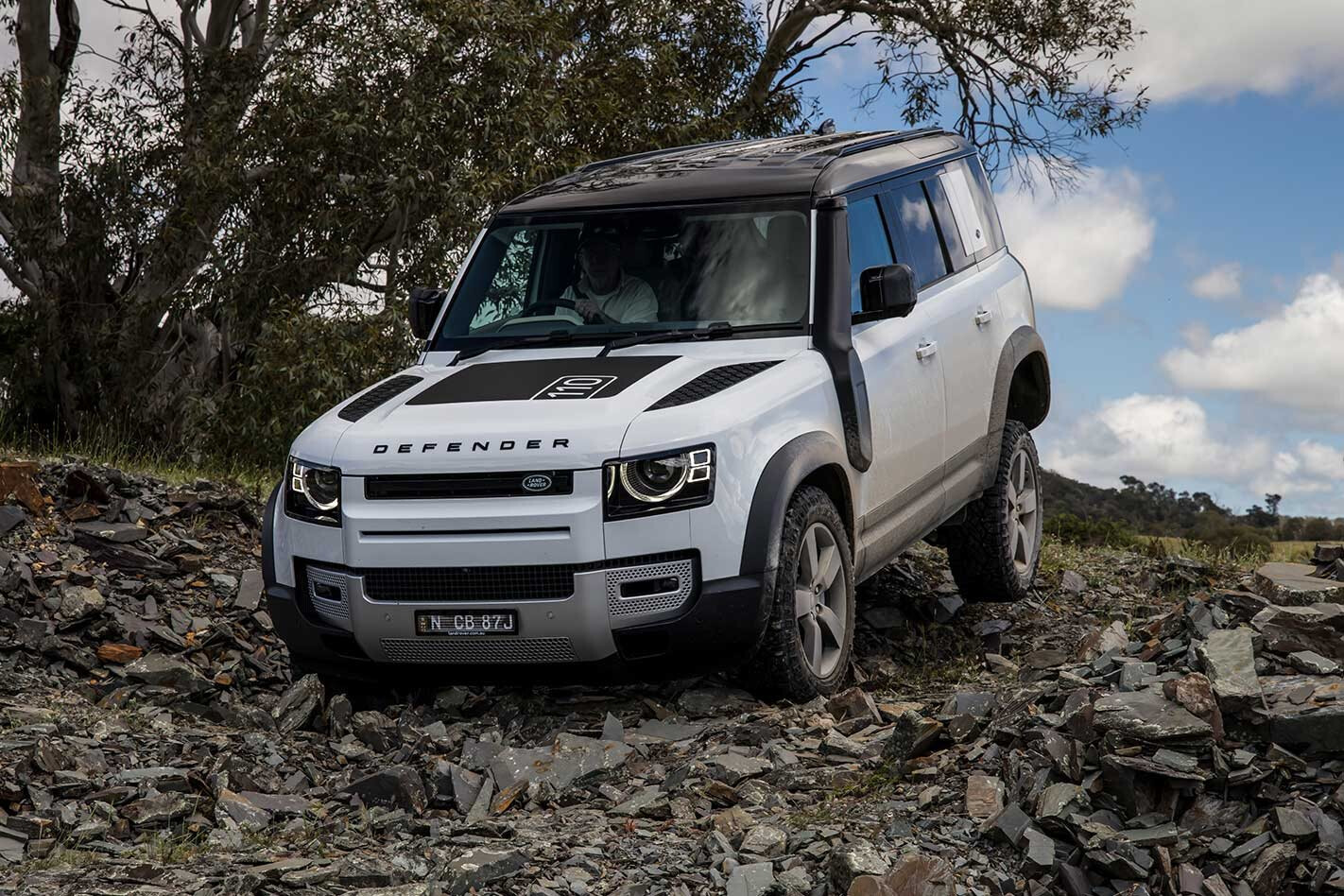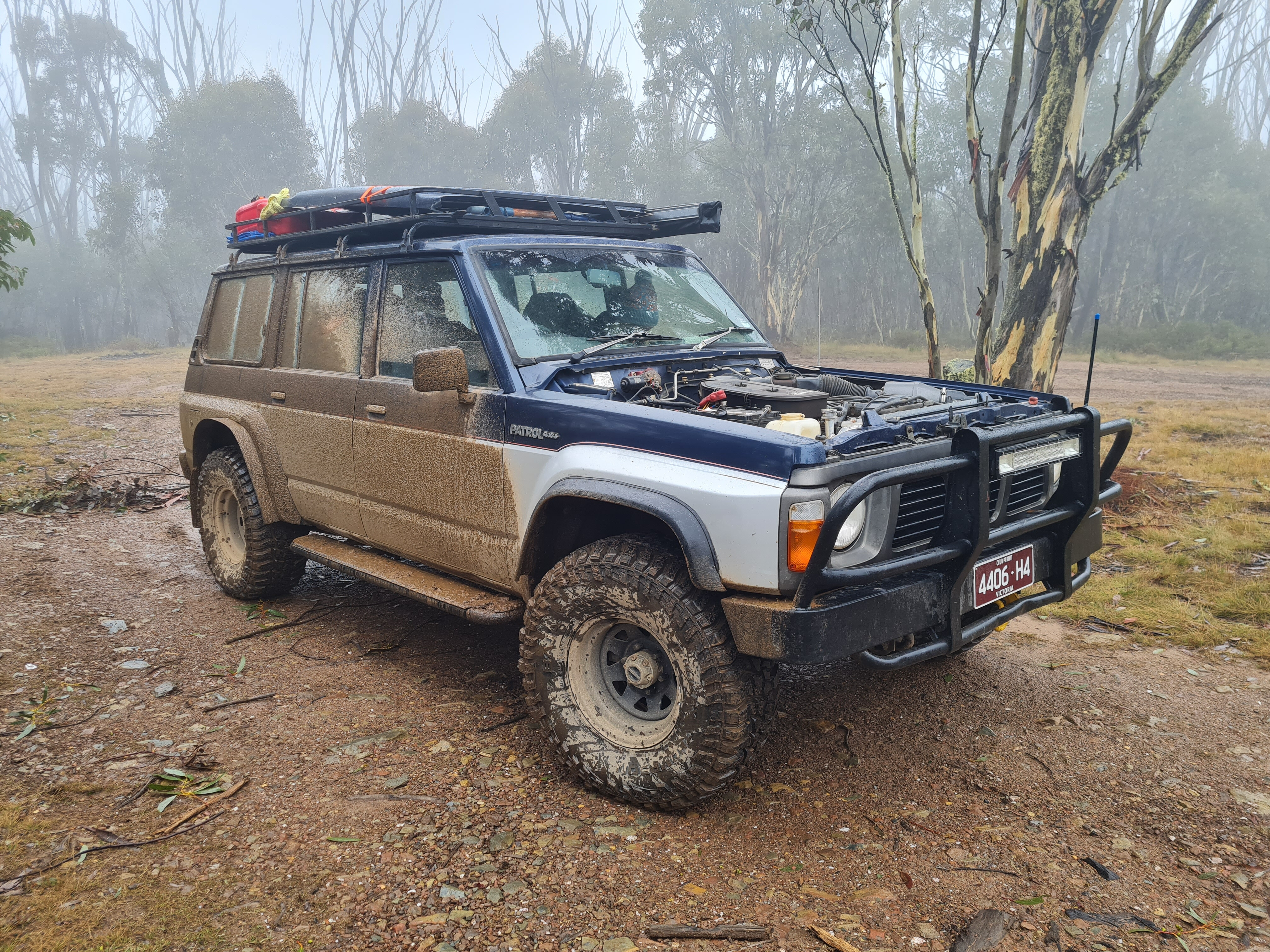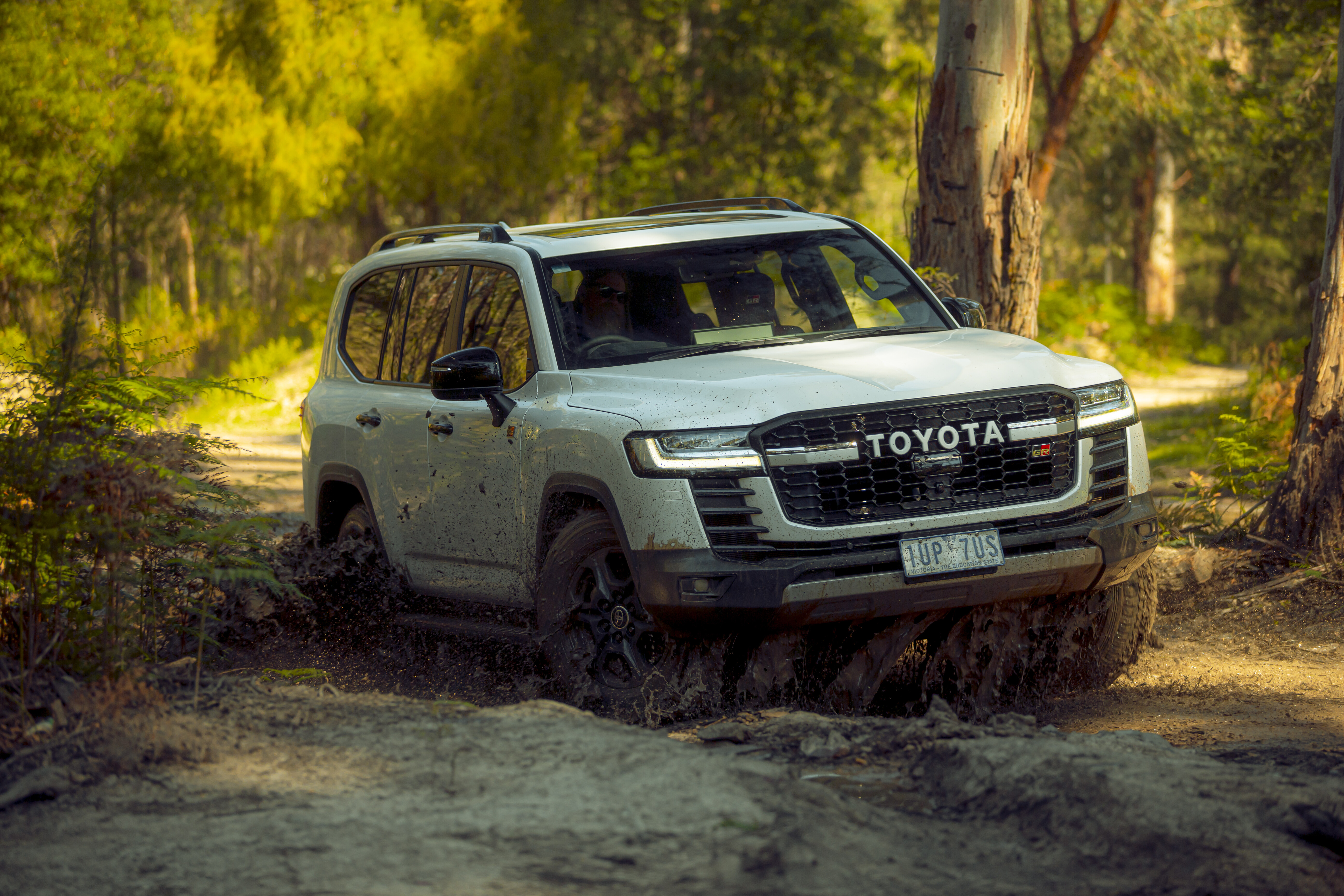TO say the new Defender is ‘all new’ is an understatement. It’s not just new in every single nut and bolt but it comes from a completely different place in time and technology.
Where the old Defender, with its separate chassis and live axles was an evolution of 4×4 design practice from 80 years ago, the new Defender with its aerospace-inspired aluminium monocoque, fully independent and adaptable suspension, and complex and interwoven array of chassis and powertrain electronics is as advanced – if not more so – than any 4×4 on the planet.
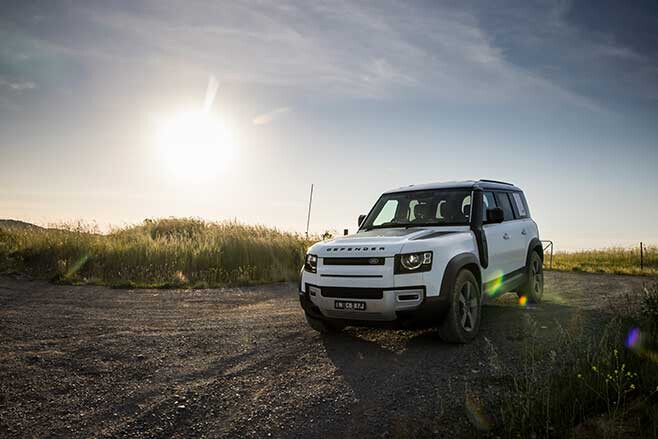
What we have here is a Defender 110 P400 SE, where the 110 refers to the four-door wagon, the P400 to the 3.0-litre straight-six petrol engine, and SE to one of many equipment levels.
Next year two different-tune straight-six diesel engines for the 110 are coming, as are short wheelbase two-door 90s with four- and six-cylinder petrol engines. Seemingly, after a short production run, the four-cylinder diesel 110s are no more.
POWERTRAIN AND PERFORMANCE
THE P400 is one of Land Rover’s new Ingenium three-, four- and six-cylinder ‘modular’ engines all based around common-design 500cc cylinders. The P400 is specifically a 3.0-litre petrol straight-six and comes with direct injection, variable valve timing and lift, and a twin-scroll turbocharger which at low engine speeds and loads is supplemented by an electric supercharger. The P400 also incorporates ‘Mild Hybrid’ (see sidebar) technology.
The straight-six design was adopted over a V6 due to its perfect dynamic balance (no need for a power-robbing rotating balance shaft), cheaper production costs (less parts) and simplified turbocharging (more convenient exhaust and intake port locations).
Land Rover claims a potent 294kW of power backed by 550Nm of torque delivered from a diesel-like 2000rpm all the way to 5000rpm. The engine is backed by a ZF eight-speed automatic, the only gearbox available.
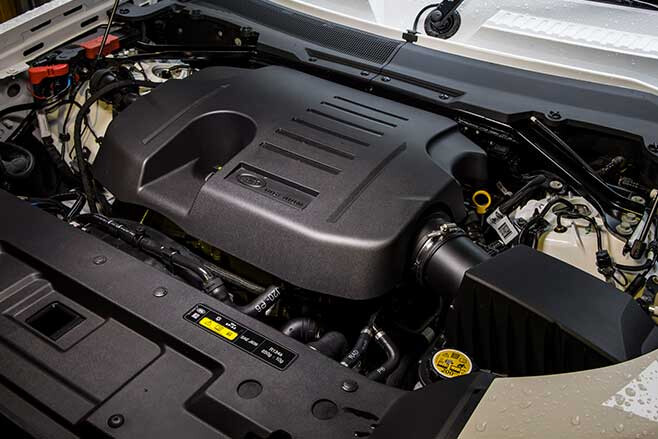
Driven with enthusiasm the P400 sounds and performs more like a performance car than a 4×4 and can charge to 100km/h from a standstill in a shade over six seconds, if you so wish. Driven more sedately the P400 is supremely effortless, flexible, smooth and quiet. And, as you would expect, the ZF eight-speed is smart and near seamless in operation.
As ever with a petrol 4×4, the elephant in the room is fuel consumption and while the P400 is thirsty (16 litres/100km plus) if you go deep into the throttle and enjoy the power and flexibility of this impressive engine, it can also be notably thrifty without resorting to driving at very slow speeds.
In our ten-day varied-driving test it averaged 13.5 litres/100km and got down to low 12s for easy highway cruising. Going on that the P400 isn’t going to give much, if anything, away to a LandCruiser 200 diesel on fuel use thanks to its significantly lower weight (down by 500kg) and its various fuel-saving technologies. Not so good is the relatively small 90-litre fuel tank – an all-too familiar complaint with Land Rovers – and the premium fuel requirement.
ON-ROAD RIDE AND HANDLING
WHILE the P400’s powertrain impresses with its performance, civility and efficiency, the new Defender chassis offers an equally impressive combination of on-road ride comfort combined with sharp, sporty handling. The comfort comes from the long-travel fully independent suspension and despite the relatively low-profile tyres, while the Defender’s well-calibrated electric power steering, relative light weight, and height adjustable air suspension that allows a road-hugging ride height, all contribute to the engaging and surprisingly sporty on-road dynamics.
Our test vehicle was fitted with 20-inch wheels carrying the optional off-road tyres (Goodyear Wrangler Duratracs 255/60s), whose relatively aggressive all-terrain pattern is a bit drummy on some road surfaces but otherwise doesn’t noticeably diminish the on-road driving experience in terms of grip or turn-in precision.
OFF ROAD
DEVELOPED as it is from the platform that underpins current Discovery, which in turn was developed from the current Range Rover and Range Rover Sport, the Defender couldn’t help but be seriously good off road. After all, it retains all the essential elements – long-travel height-adjustable air suspension and smart traction and driveline electronics – that make the Discovery and the two Range Rover models so good off road, but builds on them.

Most notably the body sits higher in relation to the chassis’s underpinnings, the wheels have been pushed farther to the corners of the chassis via a longer wheelbase for better approach and departure angles, the air suspension has a tad more lift, and for any given wheel size there’s now a taller tyre. And while the fully independent suspension’s layout is familiar, all new steel sub-frames, ball joints and bushes are designed for more durability.
OPINION: New Defender is an off-roader
Not so good is the less friendly touchscreen Terrain Response selector, and the fact that to enjoy the full off-road capability of the Defender you need to delve into the extra-cost options, some of which are only available as part of an options pack. The P400 also can’t be fitted with anything smaller than 19-inch wheels whereas the diesel 110s can take 18s. There also isn’t a fixed rear recovery hook except on the special ‘X’ model (the others get a screw-in item) while the front recovery point can only be accessed once you remove a plastic panel.
CABIN AND ACCOMMODATION
THE Defender’s cabin has a modern but utilitarian and practical feel with rubber floor coverings and plenty of stowage space around the dash and centre console. Plenty of space up front, excellent seat comfort, and good vision from the driver’s seat are also what you expect from Land Rover, although the touchscreen-driven driver interface isn’t easy to use without plenty of familiarity.
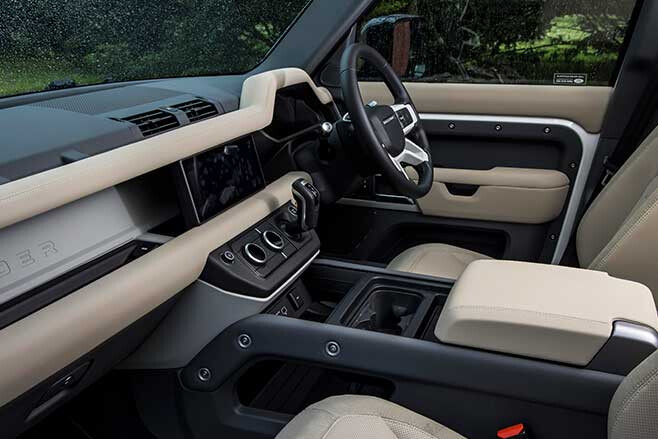
The spacious one-third/two-thirds split rear seat is wide enough for three adults and has air-con controls, multiple USB ports, two 12-volt outlets and a fold-down armrest complete with drinks holders. The seat bases also flip forward to allow the seats’ backs to fold nicely flat if you wish to extend the load area.
The load area itself isn’t huge but has solid tie-downs, rubberised floor covering, a cargo net, cargo blind, and a 230V/180W outlet as well as a 12-volt outlet. Our test vehicle was a five-seater although third-row seats are available as a ‘five-plus-two’ option, as are three-person front row seats in some 110s and all 90s. That’s a blast from the past!
PRACTICALITIES
AS you would expect from Land Rover, the Defender isn’t short of heavy load and tow capability, as evidenced no better than by its 6665kg Gross Combined Mass. That’s 665kg better than the best of the current dual-cab utes, which are purpose-built low and tow vehicles.

An integrated tow-hitch receiver (complete with wiring) comes as an integrated factory option, while an optional towing pack brings extras such as surround-view camera system, different side and rear mirrors, etc.
Off-road factory accessories run to a snorkel (as fitted to the test vehicle) and a front protection bar and winch. Where the local aftermarket will go with the Defender and what they will offer, if much at all, we are yet to see.
CONCLUSION
THE Defender P400 offers an extraordinarily wide spectrum of capability and is both dynamic on road and seriously capable off road. Very few owners will ever explore the P400s full potential in either environment, but if they do they are in for a treat.
LESSON: History of the Land Rover Defender
Weighing against the new Defender is price and, even if the Defender name implies ‘basic, simple Land Rover’, it’s anything but basic and simple. In this case the Defender name simply means ‘best off-road Land Rover’. In factory spec, it’s probably the best-ever off-road Land Rover.
The potent performance yet relative efficiency of this new-generation petrol engine is also worth noting, although the soon-to-arrive straight-six diesel may well still make it largely irrelevant.
MILD HYBRID?
LAND Rover calls the Defender P400 a ‘Mild Hybrid’, which means some hybrid-inspired tech without being a full hybrid. Like a hybrid it can capture and save energy for reuse later on, but unlike a typical hybrid the electrical side of the powertrain can’t power the vehicle by itself nor contribute a significant part of the available power at any time.
As with a hybrid, Land Rover’s Mild-Hybrid has an electric motor-generator, that is, something that can either serve both as an electric motor and an electric generator. In the Mild Hybrid this motor-generator is notably much smaller than it is in a conventional hybrid.
Primarily the Mild Hybrid’s motor-generator serves as the engine’s starter motor and gets plenty of use in this role given the engine’s automatic stop-start function. For what Land Rover calls ‘transient acceleration’, that is, getting the vehicle off the mark from a standstill, the electric motor can also feed some torque directly back into the engine’s crankshaft.
The generator function of this unit is activated when the vehicle is coasting or slowing under brakes. Using the vehicle’s kinetic (moving) energy, that would otherwise go to waste, it generates electrical power, which is stored in the 48-volt battery. And this ‘free’ electrical power is a good thing as the Defender needs lots of it, not only to power the automatic stop-start function, the electric power-steering and the vehicle’s vast array of ancillary functions, but also as an electric supercharger that provides off-idle intake boost pressure while the twin-scroll turbocharger is scrolling up.
EQUIPMENT
STANDARD equipment on the P400 SE starts with keyless entry and start, part-leather seats, rubber flooring, electric-steering column adjustment, auto lights and wipers, automatic highbeam, LED headlights/tail-lights and an assisted tailgate. A ten-inch touchscreen, sat-nav, the usual smartphone connectivity, a digital radio and a Meridian audio system are also standard. Safety features are headlined by automatic emergency braking, lane-keeping assist, rear traffic monitoring, 360-degree surround-view cameras and tyre pressuring monitoring.
Our test vehicle was also fitted with some $17K worth of extras including two different off-road option packs, one with a rear locker and the other with Terrain Response 2, All Terrain Progress Control and Configurable Terrain Response. Other factory options include heated front seats with memory, a sunroof, a tow-hitch receiver and adaptive cruise control. The snorkel and wheel-arch protection are local LR accessories. All up, price is $119K.
OLD VS NEW
IT’S the obvious question, but how does the ‘new’ Defender compare to ‘old’ Defender which ceased production in 2016 as the last of a long line of 4x4s that stretched all the way back to original Land Rover of 1948.To answer this old-verses-new question we were lucky to access a well-travelled – 260,000km – but very original 2012 Defender 110 courtesy of military and historical vehicle collector and Land Rover stalwart Warren Brown.

Specifically we wanted to see how the old and new Defenders compared off road and Warren’s 110 – his daily driver – was ideal given it’s not modified with a lift kit, diff locks, or larger wheels and tyres or any such, which would distort the comparison. Warren’s Defender is not just factory spec but it’s also mechanically the same as the last Defenders that rolled off the Solihull, UK, assembly some five years ago given 2012 saw the final Defender update with the then-new 2.2-litre diesel.
Jacked right up on its height-adjustable air suspension the new Defender matches the old Defender for clearance, and approach and departure angles, and is a tad better on departure. And it has the same relatively large overall tyre diameter (32-inch) as the old Defender although with far less – potentially troublesome – tyre sidewall, given the 20-inch wheels on our new Defender test vehicle and the 16s on the old Defender.
Most notably the new Defender performed better in terms of traction at maximum articulation, despite the old Defender’s theoretical advantage of live axles. A set-piece articulation test that stopped the old Defender, despite the best efforts of its electronic traction control, was cleared by the new Defender without fuss or hesitation.
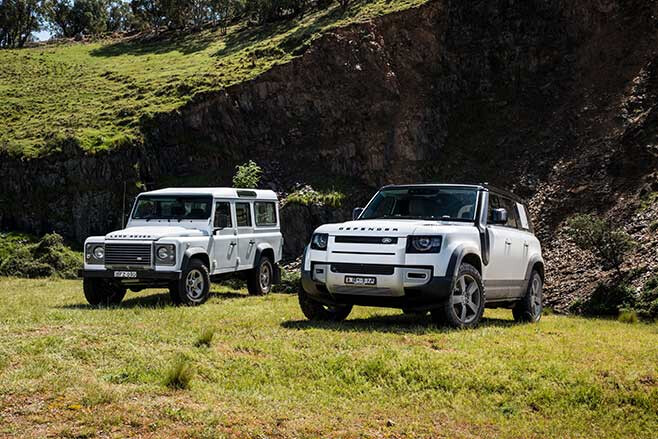
The reality is that the new Defender, despite its fully independent suspension has impressive wheel travel and, secondly, it comes with far more sophisticated chassis and driveline electronic controls. Our test vehicle came with the full suite of off-road electronic options.
All this doesn’t mean the new Defender would necessarily be a better vehicle to ‘compass line’ off into the unknown, as the old Defender and its forebears were so adept at doing, as issues of complexity and repair-ability weigh against it.

